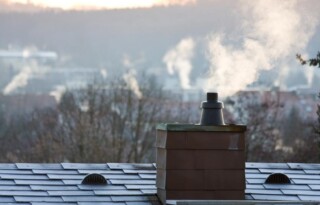Were you aware that carbon monoxide poisoning is the leading cause of poisoning in Belgium? Carbon monoxide is a lethal gas that is generated as a result of the incomplete combustion of fuels that contain carbon. The culprits are usually poorly working (often outdated) heating appliances. As the symptoms of carbon monoxide poisoning are not always particularly clear (headache, dizziness, nausea, vomiting, …) and carbon monoxide is both odourless and colourless, people do not always spot the problem right away and consequently fail to act in timely fashion. Plenty of reasons to put in place preventive steps!
1.Have your central heating installation serviced
Be safe and have your central heating installation serviced in good time by a professional. You will not be surprised to learn that this is a legal obligation for businesses and private home owners alike.
2.Have an efficient ventilation system fitted
The fact that we are insulating our homes to increasingly higher standards obviously has a beneficial impact on our purses. Yet, few people stop to think that high-grade insulation also has its drawbacks. The lack of fresh air soon gives free rein to the formation of carbon monoxide in non-electric heating appliances. The best way forward is to invest in a ventilation system D to make sure we have a constant supply of fresh air in our homes.
3.Checking the chimney
Have you still got one of those old-time chimneys? Be sure to have it swept at regular intervals and ask a professional to check if it is working properly and make sure the smoke is evacuated outdoors.
4.Careful with back-up heating
Sometimes there is simply no other option but to use back-up heating to ensure a snug and warm indoor temperature. However, do try and avoid resorting to fuel-operated back-up heating appliances for the simple reason that these appliances are not fitted with an exhaust to evacuate combustion gases.
5.Carbon monoxide poisoning: keep an eye out for the weather forecast
The weather forecast always tells you when to be extra wary of carbon monoxide poisoning. This is chiefly the case when it gets very cold, when outdoor temperatures start rising slightly, when there is no wind at all and when there is a great deal of wind. The aggravated risk of carbon monoxide poisoning is shown on the weather map by way of a small warning triangle.
